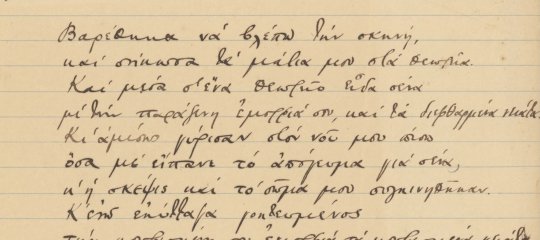Νέα Ελληνικά στη Μεσσήνη και το Ρήγιο
Δανιήλ Μακρής
Καλό μήνα σε όλους τους φίλους των Φρυκτωριών! Να σας δώσω μερικές πληροφορίες για τα προγράμματα Νέων Ελληνικών που γίνονται φέτος στη Μεσσήνη και στο Ρήγιο, Καλαβρία.
8 Μαρτίου 2005
- Μεσσήνη, Γλωσσολογικό Λύκειο, 20 ώρες, 15 μαθητές (18 ετών) από τον Νοέμβριο του 2004 μέχρι τον Φεβρουάριο του 2005
- Ρήγιο, Καλαβρία, Γυμνάσιο «Βιτριόλι», 15 ώρες, 18 μαθητές (12-13 ετών), από τις 10 Φεβρουαρίου ως τις 8 Μαρτίου.
- Βίλα San Giovanni, Κλασικό Λύκειο, 30 ώρες, 30 μαθητές (14-17 ετών), από τις 11/2 ως τις 13/4/2005.
- Πανεπιστήμιο Μεσσήνης – παράρτημα Ρήγιου 30 ώρες, 15 φοιτητές, από τις 8/3 ως τις 17/5/2005.
Καθηγητής στα παραπάνω προγράμματα είναι ο Δανιήλ Μακρής. Άλλα προγράμματα γίνονται στο Ρήγιο από τους αποσπασμένους Έλληνες δασκάλους και καθηγητές κκ Τσέρτο, Αλεξανδρίδου και Κοραχάι με τους οποίους η συνεργασία είναι άριστη.
Τα βιβλία που χρησιμοποιούνται είναι τα εξής:
- Πανεπιστήμιο Μεσσήνης – παράρτημα Ρήγιου: Ελληνική γλώσσα του Γ. Μπαμπινιώτη, Θέματα Νεοελληνικής Σύνταξης της Θεοφανοπούλου - Κοντού και τα βοηθήματα του ΚΕΓ (1ο και 2ο επίπεδο) για το Πιστοποιητικό Ελληνομάθειας
- Γλωσσολογικό Λύκειο Μεσσήνης: Νέα Ελληνικά για ξένους, ΑΠΘ (5 ενότητες)
- Κλασικό Λύκειο Βίλα San Giovanni: Ηρ. Σιόντη (Πανεπιστήμιο Ιωαννίνων) Νέα ελληνικά (5 ενότητες)
- Γυμνάσια στο Ρήγιο Καλαβρίας: Ελληνική Γλώσσα του Γ.Μπαμπινιώτη (4 ενότητες).
Τα προγράμματα περιλαμβάνουν συνεχείς αναφορές στον πολιτισμό, στην ιστορία, στις λαϊκές παραδόσεις, που συγκρίνονται με τις ντόπιες. Tο ενδιαφέρον είναι μάλλον συναισθηματικό και πηγάζει από την ιστορική συνείδηση του καθενός. Εδώ όλα μιλάνε για την Ελλάδα: μυριάδες οικογενειακά ονόματα, παραδόσεις, φύση, και τα εντυπωσιακά, κυρίως στη Σικελία, μνημεία του αρχαίου πολιτισμού.
Ο νότιος Ιταλός είναι, συνειδητά ή ασυνείδητα, φορέας ενός ελληνίζοντος, ελληνοειδούς πολιτισμού, ενός δυτικόμορφου ελληνισμού. Εδώ ο Έλληνας δεν αισθάνεται ξένος και ο ντόπιος αισθάνεται λίγο πολύ και Έλληνας. Πέρα απ' αυτά είναι σημαντικός ο ρόλος που παίζει ο θεσμός του Κλασικού Λυκείου, του σχολείου της ιθύνουσας τάξης της χώρας: πρόκειται για 759 λύκεια με 200.000 μαθητές σε όλη τη χώρα, με τέλειο πρόγραμμα για τα αρχαία ελληνικά (γραμματική, συντακτικό και ιστορία της λογοτεχνίας). Και αυτό συμβάλλει πολύ στην τάση φιλελληνισμού που παρατηρείται. Δυστυχώς σε ακαδημαϊκό επίπεδο η θέση των Νέων Ελληνικών συρρικνώνεται.
Εύχομαι αυτά τα λίγα να΄ναι χρήσιμα στους φίλους των Φρυκτωριών.
Με εκτίμηση,
Δανιήλ Μακρής
- Εισέλθετε στο σύστημα για να υποβάλετε σχόλια










